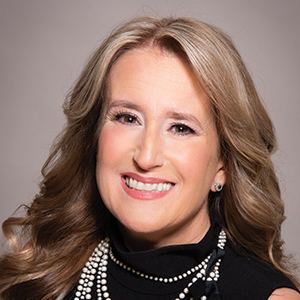The American dream is the belief that anyone, regardless of their economic class or background, will achieve success through hard work, determination and drive. Many view homeownership to be central to this dream.
The journey to homeownership can be rewarding but also challenging. For some aspiring homeowners in underserved communities, the process may be even harder to navigate. The interest rate for a 30-year fixed mortgage has risen quickly this year to nearly 6%, according to a St. Louis Federal Reserve analysis of Freddie Mac data.
U.S. home prices soared earlier in the COVID-19 pandemic due to plunging interest rates and homeowners fleeing urban neighborhoods for suburban and rural areas. Coupled with the lack of inventory, this put an even bigger stress on the underserved mortgage seeker as they were unable to compete with the cash buyer. Supply chains struggled to deliver goods, which put a big hurt on construction activity and the supplies needed to build new homes. Now what?
Solution seekers
This is where mortgage originators enter the equation. These professionals have a responsibility and obligation to make sure they are serving the underserved borrower by offering agency programs and products as intended. The fit-into-the box mentality is over, and originators need to creatively meet the needs and challenges of the underserved. Mortgage originators are the solution seekers.
Federally backed loan programs and nonqualified mortgages alike have standards and guidelines, but not all lenders truly lend the way the agencies intend. Empowerment through homeownership is educational and mission-based. Underserved communities are therefore No. 1 with manufactured housing, renovation loans and government programs without overlays.
Education begins with the originator. The mortgage industry cannot remain stagnant and must take part in educating underserved borrowers. This also will help communities that are in dire need of rebuilding. It’s no secret that communities benefit from renovation projects that are often funded through a specialized mortgage program. Improvements to one home immediately will have a positive effect on the value of the surrounding homes, thereby boosting the desirability of the community. A trend can start with just one fixer-upper.
Undeserved borrowers
Who are these underserved borrowers? They may include self-employed and 1099 earners who can’t use tax returns to qualify for a home loan. Additionally, many people who are less than seven years removed from a foreclosure, short sale, bankruptcy or deed-in-lieu event are shut out of an agency loan even if they can satisfy ability-to-repay requirements and meet credit guidelines. Many others struggle with high rents and have no way to save toward a downpayment.
Residents in these communities often lack family wealth they can tap for help with a downpayment, or they earn too little to save for one. More so than other groups, people of color often lack anecdotal knowledge about how to obtain mortgages, which can add to the problem of limited financial resources. Originators need to point these potential borrowers to the existence of downpayment-assistance programs or lending programs that allow for a minimum 3% downpayment.
Rural, elderly, low-literacy, blue-collar and low-income populations also are commonly underserved. There are many local and national downpayment-assistance programs offered, and the agencies that run them are excited and eager to help. It just takes an interested and informed mortgage originator to facilitate the introduction.
Misconceptions persist at the neighborhood level that can spread unchecked. If people are unaware that there are downpayment-assistance programs or low-downpayment options, then these can be dismissed as rumors and myths in the underserved community. Originators need to constantly educate potential borrowers about mortgage products designed to be affordable for low- to moderate-income earners.
Federal resolve
This past May, President Joe Biden
announced a new affordable-housing plan to ease the nation’s housing crisis. His administration started with a strategy designed to boost the supply of quality housing in every community.
Among the notable points of the plan are rewards for jurisdictions that have reformed their zoning and land-use policies. There will be a deployment of new financing mechanisms to build and preserve more housing types, such as chattel loans for manufactured homes, as well as expansion and improvement of existing forms of federal financing such as construction-to-permanent loans.
The president’s 2023 budget includes investments in housing supply that would lead to the production or rehabilitation of another 500,000 homes, along with a previously announced goal of 100,000 homes over the next three years.
This action has received bipartisan support. And it’s an opportunity for mortgage originators to lay out options for qualified borrowers who hold the dream of homeownership.
Client outreach
There is more that the mortgage industry can do. This is every lender’s opportunity to step up and make their front-line loan originators available to consumers who have never enjoyed the opportunities that homeownership offers. Consider the first-time homeowner or the underserved borrower.
Understanding the needs of your clients is the best way to get new business in the coming purchase-money market. It also will be one of the best ways to show regulators that you are taking the president’s affordable-housing mandate seriously.
Get the word out that you are a consumer’s solution for navigating the myriad lending options. Market yourself as an expert in solutions. If your clients are social media focused, reach out to them with short and informative posts, tweets and videos.
If your clients are not up on the current trends in social media, your best marketing might occur via printed media or even a phone call. Educate yourself. Share what you’ve learned with your borrower. Let’s continue to empower people by helping them buy homes and fulfill the American dream. ●
-
Laura Brandao is chief growth officer and a partner at mortgage lender EPM, where she oversees operations and business development. She also serves as the CEO of Lighthouse Lending Capital, a new division of EPM that specializes in unique loan programs and private lending. She serves with several organizations dedicated to lifting others, including as chair of the visionary program for the National Association of Minority Mortgage Bankers of America (NAMMBA) and on the Mortgage Bankers Association of New Jersey’s women's committee.
View all posts





